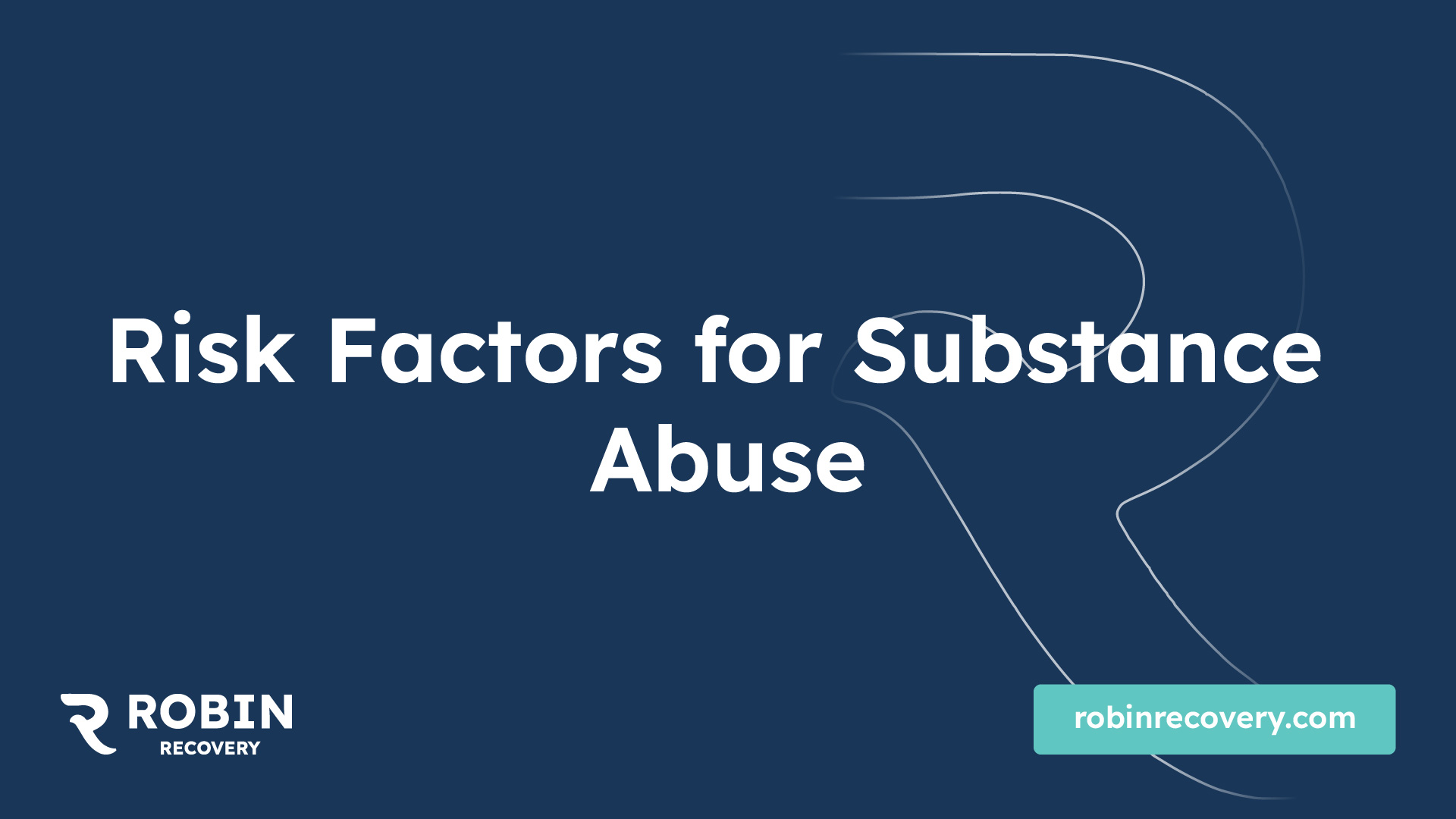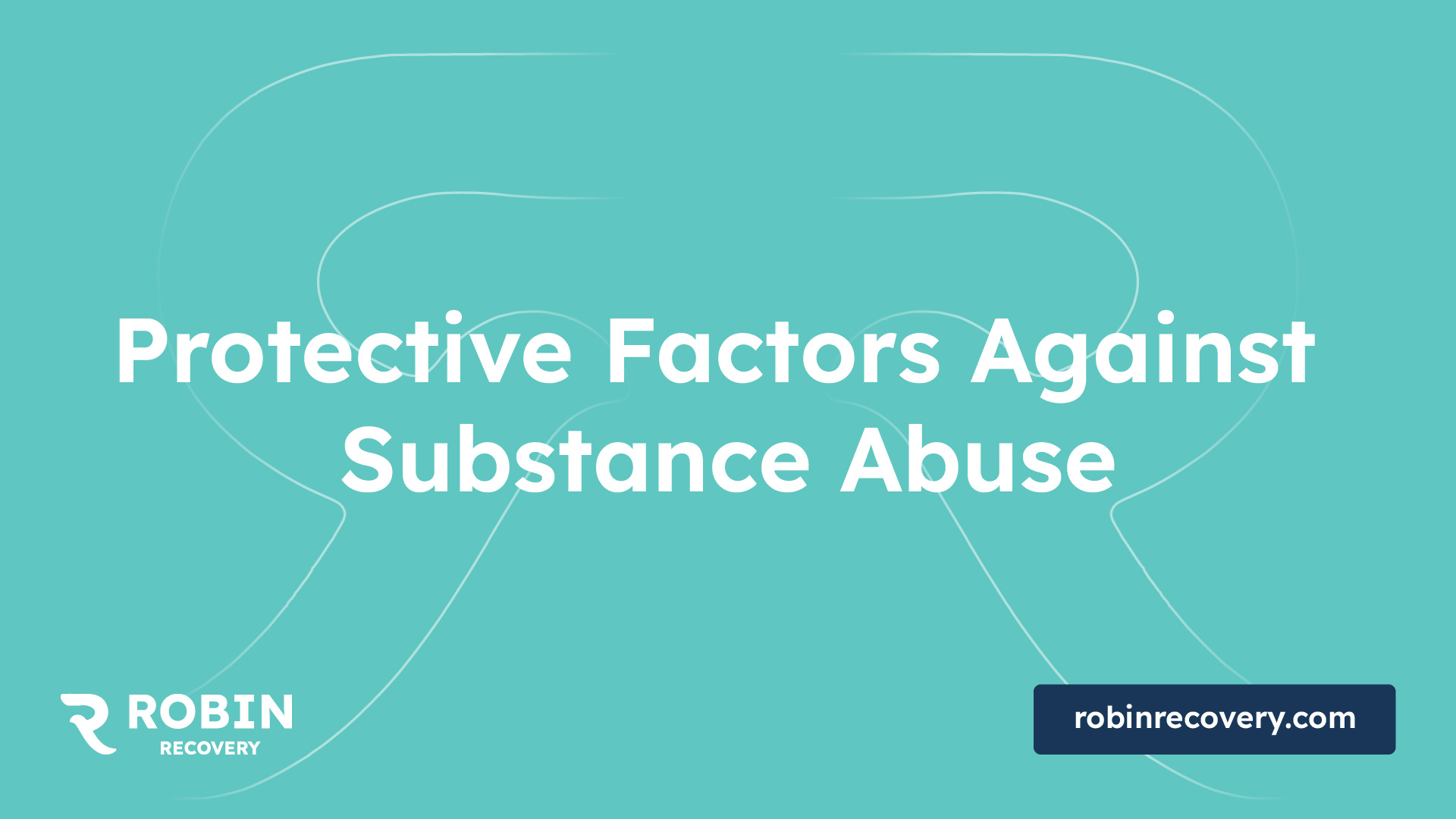Examining Risk and Protective Factors in Drug Usage


Influencing Factors on Drug Usage
Understanding the factors that influence drug usage is essential for effective prevention and intervention efforts. Two key components in this context are risk factors and protective elements.
Understanding Risk Factors
Risk factors are conditions or characteristics that increase the likelihood of individuals engaging in substance abuse. These factors can encompass various aspects of an individual's life, including personal, social, and environmental factors. Some common risk factors for substance abuse include:
By recognizing and understanding these risk factors, it becomes possible to identify individuals who may be more susceptible to drug usage and implement targeted prevention strategies. Risk factors are not deterministic, but they indicate an increased likelihood of substance abuse. For more information on factors influencing drug use tendencies in individuals, refer to our article on factors influencing drug use tendencies in individuals.
Importance of Protective Elements
Protective factors are conditions or characteristics that reduce the likelihood of individuals engaging in substance abuse or mitigate the impact of risk factors. These factors can play a crucial role in promoting resiliency and positive outcomes. Some examples of protective factors against substance abuse include:
Protective factors such as parental support and involvement can diminish the influence of strong risk factors like having peers who abuse substances. Multiple protective factors can further reduce the impact of risk factors, lowering the likelihood of youth engaging in substance use that can lead to substance abuse [1].
In preventive interventions, the interactive effect of risk and protective factors is vital. Successful prevention programs focus on reducing risk factors and enhancing protective factors, making them more likely to succeed in preventing substance abuse among children and youth. For more information on preventive interventions, refer to the section on preventive interventions.
Recognizing the significance of both risk factors and protective elements is crucial in developing comprehensive strategies to address substance abuse. By targeting modifiable risk factors and enhancing protective factors through family, school, and community prevention programs, efforts to prevent substance abuse among adolescents can be more effective. It is essential to continue research and evaluation to identify innovative approaches and delivery platforms, including digital platforms and policy initiatives, to further enhance substance abuse outcomes among adolescents.

Risk Factors for Substance Abuse
When examining the factors influencing drug usage, it is important to consider the risk factors that can contribute to substance abuse. Several factors can increase the likelihood of youth engaging in substance use, including early aggressive behavior, lack of parental supervision, academic problems, peer substance use, and child abuse or neglect [1].
Early Aggressive Behavior
Early aggressive behavior, often observed in childhood, is a risk factor for substance abuse. Children who display aggressive behavior at a young age may be more susceptible to using drugs as they grow older. Addressing and redirecting aggressive behavior early on can help mitigate the risk of future substance abuse.
Lack of Parental Supervision
The absence of adequate parental supervision can also contribute to increased substance abuse risk. When parents are not actively involved in their children's lives or fail to provide sufficient supervision, it can create an environment where experimentation with drugs becomes more likely. Maintaining parental involvement and establishing open lines of communication with children are key protective factors against substance abuse.
Academic Problems
Academic problems, such as poor school performance, truancy, or dropping out, can be risk factors for substance abuse. Difficulties in school can lead to feelings of frustration, low self-esteem, and a sense of disconnection, which may increase the likelihood of turning to drugs as a coping mechanism. Identifying and addressing academic challenges early on can help reduce the risk of substance abuse.
Peer Substance Use
Peer influence plays a significant role in substance abuse risk. When individuals are surrounded by peers who engage in substance use, they may feel pressured to conform and experiment with drugs themselves. The desire to fit in and be accepted by their peers can outweigh the potential risks associated with substance abuse. Building strong social connections and finding positive peer groups can act as protective factors against substance abuse. If you're struggling with substance abuse, consider finding your tribe for support.
Child Abuse or Neglect
Experiencing child abuse or neglect is a significant risk factor for substance abuse. Individuals who have been subjected to abuse or neglect during their childhood may turn to drugs as a way to cope with the emotional pain and trauma they have endured. Treatment and support for survivors of child abuse or neglect are essential in mitigating the risk of substance abuse.
Recognizing these risk factors is crucial for developing effective prevention and intervention strategies. By addressing early aggressive behavior, promoting parental involvement, providing academic support, fostering positive peer relationships, and offering support to survivors of child abuse or neglect, we can help reduce the risk of substance abuse and its associated negative impacts.

Protective Factors Against Substance Abuse
Protective factors play a crucial role in mitigating the influence of risk factors and reducing the likelihood of substance abuse. By understanding and strengthening these protective elements, we can create a supportive environment that promotes healthy choices. In this section, we will explore some key protective factors against substance abuse, including parental support and involvement, the impact of strong protective factors, and strategies for strengthening these elements.
Parental Support and Involvement
One of the most significant protective factors against substance abuse is parental support and involvement. Research has consistently shown that when parents are actively engaged in their children's lives, it can significantly reduce the risk of substance abuse. Parental support involves providing emotional guidance, setting clear expectations, and fostering open communication with children.
Parental involvement in a child's life can take many forms, including attending school events, participating in extracurricular activities, and having regular conversations about their experiences and challenges. By building a strong parent-child relationship, parents can establish a foundation of trust and support that reduces the likelihood of their children turning to substances as a coping mechanism.
Impact of Strong Protective Factors
Protective factors act as a buffer against risk factors, making it less likely for individuals to engage in substance use that can lead to substance abuse. When multiple protective factors are present, they can collectively diminish the influence of a few risk factors, increasing the resilience of individuals and reducing their vulnerability to substance abuse.
For example, strong protective factors such as parental support, positive peer relationships, and academic success can counterbalance the impact of risk factors like early aggressive behavior or peer substance use. By cultivating a nurturing and supportive environment that incorporates these protective elements, we can empower individuals to make healthier choices and avoid substance abuse.
Strengthening Protective Elements
To effectively prevent substance abuse, it is essential to strengthen protective factors through various avenues. Here are some strategies to enhance protective elements:
By targeting modifiable risk factors and enhancing protective factors through various prevention programs, we can make significant strides in preventing substance abuse among children and youth. It's important to continually evaluate and refine these interventions to ensure their effectiveness and address the evolving needs of individuals at risk.
Understanding the impact of both risk and protective factors is crucial in designing comprehensive prevention strategies that address the complex nature of substance abuse. By fostering a supportive environment that strengthens protective elements, we can empower individuals to make healthier choices and lead substance-free lives.
Preventive Interventions
In the effort to address substance abuse and addiction, preventive interventions play a crucial role. These interventions aim to reduce the likelihood of individuals engaging in substance use by targeting both the risk factors and protective elements that influence drug usage. By understanding the interactive effect of these factors, successful prevention programs can be designed and implemented effectively.
Interactive Effect of Risk and Protective Factors
Risk factors increase the likelihood of individuals initiating substance use and developing harmful patterns, while protective factors decrease the likelihood or reduce the impact of risk factors. It is important to note that not every individual who experiences a risk factor will engage in substance abuse. The goal of prevention efforts is to reduce risk factors and strengthen protective factors to mitigate the potential for substance use.
The interactive effect between risk and protective factors has significant implications for the design and implementation of preventive interventions. Programs that effectively reduce risk factors and enhance protective factors are more likely to succeed in preventing substance abuse among children and youth. By addressing multiple factors simultaneously, these interventions work towards promoting healthier behaviors and reducing the risk of substance abuse.
Successful Prevention Programs
To effectively prevent substance abuse, preventive interventions should target modifiable risk factors and enhance protective factors. These programs should be designed to address the specific needs and characteristics of the target population, such as adolescents. Early identification, awareness, prevention programs, and routine monitoring of adolescent health data are essential components of successful prevention efforts.
There is a wide range of preventive interventions that have shown promise in reducing substance abuse among adolescents. These interventions can be delivered through various platforms, including digital platforms and policy initiatives. However, further research is needed to evaluate their effectiveness and determine the most optimal approaches.
Design and Implementation
When designing preventive interventions, it is important to consider the unique needs and characteristics of the target population. Tailoring interventions to address specific risk factors and strengthen protective factors is crucial for maximizing effectiveness. This may involve incorporating evidence-based strategies and utilizing various delivery platforms to reach the intended audience.
The implementation of preventive interventions requires collaboration among multiple stakeholders, including families, schools, communities, and healthcare providers. By working together, these stakeholders can create a supportive environment that promotes healthy behaviors and provides resources to individuals at risk of substance abuse.
In conclusion, preventive interventions that address risk factors and enhance protective elements are essential in reducing the likelihood of substance abuse. By understanding the interactive effect of these factors, successful prevention programs can be designed and implemented to promote healthier behaviors and mitigate the risk of substance abuse among individuals, particularly adolescents.
Impact of Genetic Factors
When examining the factors that influence drug usage, it is important to consider the impact of genetic factors. Genetic polymorphism, the presence of genetic variations within a population, has been associated with addiction. Studies have shown a link between genetic variants in genes such as OPRM1, OPRD1, OPRK1, and BDNF, and the risk of developing drug addiction.
The OPRM1 gene, specifically the rs1799971 variant, has been found to be associated with drug addiction. Recent genome-wide association studies (GWAS) have also identified significant loci near genes like KCNG2, KCNC1, APBB2, CNIH3, RGMA, and OPRM1 for Opioid Use Disorder (OUD). These findings suggest that genetic variations play a role in the development of substance use disorders.
Twin and family studies have further supported the influence of genetics on substance use disorders. It is estimated that approximately 50% of the liability to Opioid Use Disorder (OUD) is due to additive genetic factors. Additionally, there are genetic correlations among substance use and substance use disorders, indicating shared genetic factors among alcohol, tobacco, and cannabis use [6].
It is important to note that while genetics play a significant role in determining an individual's susceptibility to substance use disorders, they are not entirely deterministic. Genomic studies aim to illuminate factors that may protect or predispose a person to substance use disorders, which can be used to expand preventive services and empower individuals to make informed decisions about drug use [7].
Identifying specific genetic markers associated with substance use disorders is an ongoing area of research. As larger sample sizes of individuals with diverse ancestry are studied, the field is expected to see significant advances in genetic discovery. Understanding the role of inherited genes and genetic polymorphism can contribute to a better understanding of the underlying mechanisms and provide insights for the development of targeted prevention and treatment strategies.
By considering the impact of genetic factors, researchers and healthcare professionals can gain a better understanding of the complexities of substance use disorders and work towards more personalized approaches to prevention, intervention, and treatment.
Substance Use Disorder Statistics
Understanding the prevalence and impact of substance use disorder is crucial in addressing this global public health issue. In this section, we will explore global substance abuse trends, the prevalence of substance use disorder among adolescents, and the associated mortality rates and health issues.
Global Substance Abuse Trends
Substance abuse is a significant concern worldwide. In 2016, approximately 5.6% of individuals between the ages of 15 and 64 globally abused substances at least once in their lifetime. The issue of substance abuse has particularly increased among adolescents and young adults, especially among men aged 15-30 years. The peak age of initiation for substance use falls between 16 and 18 years old. Alarmingly, substance abuse causes 14% of health problems among young men.
Cannabis is the most commonly used illicit drug globally, with over 200 million individuals documented as abusers. Additionally, misuse of prescription and over-the-counter medications is a common concern. In 2009, 20.2% of high school students in the United States misused prescription medicine. Alcohol abuse remains a significant issue, with approximately 11.8 million people dying annually due to its misuse [5].
Prevalence Among Adolescents
Substance use disorder is a particular concern among adolescents. Epidemiological estimates suggest that up to 29.1% of individuals will meet the criteria for Alcohol Use Disorder (AUD) in their lifetime, while 27.9% will meet the criteria for Nicotine Use Disorder (NicUD). The lifetime prevalence rates for Cannabis Use Disorder (CanUD), Opioid Use Disorder (OUD), and Cocaine Use Disorder (CocUD) are lower at 6.3%, 2.1%, and 2.4% respectively [6].
Mortality Rates and Health Issues
Substance use disorder is associated with significant mortality rates and numerous health issues. In 2021, approximately 107,000 people in the United States died from drug overdoses. Among these deaths, 37% involved simultaneous exposure to opioids and stimulant drugs. It is essential to address the complex nature of substance use disorder and provide effective treatment options to prevent fatal outcomes.
It is clear that substance use and abuse continue to pose substantial public health challenges globally. The prevalence of alcohol, tobacco, and other drug use increases rapidly from early to late adolescence, peaks during the transition to young adulthood, and gradually declines throughout adulthood. Early onset of substance use is associated with negative health, social, and behavioral outcomes later in life [8].
By understanding the statistics surrounding substance use disorder, we can better identify the scope of the problem and work towards effective prevention, intervention, and treatment strategies. It is crucial to address the underlying risk and protective factors influencing drug usage and implement evidence-based approaches to combat substance abuse and its associated health consequences. For more information on addiction and recovery, explore our article on your recovery toolbox.
References
[2]:
[3]:
[4]:
[5]:
[6]:
[7]:
[8]:
